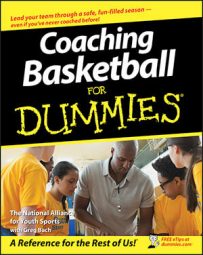If you have a ball hog on your team, you may get frustrated and not know what to do. Here are a couple ways a player can earn the unwanted ball-hog label and actions you can take to help them ditch it:
- They're unaware: Perhaps the youngster isn't aware that they're hanging on to the ball too much. They watch older players who score a lot and want to emulate them. Maybe they're new to basketball or haven't been involved in any type of team setting before, and they need to get accustomed to how sharing the ball makes for a stronger and more effective unit. Go with drills that emphasize passing to help your players break their habit of dribbling and shooting every time down the floor. You can even hold no-dribble scrimmages, where players can only pass and shoot the ball.
- They receive mixed instructions: Perhaps the child receives conflicting instructions from their dad or mom at home. A parent may be telling the child that they're the team's best shooter and that they need to take more shots. How can you tell? If the child seems to be doing everything differently than how you're instructing the team, do some investigating. Ask the child why they aren't listening to your instructions. Perhaps they didn't understand what you were saying.
- If they confess that they're receiving conflicting instructions, that plops the youngster in confusing territory and forces you to step in. Talk to the child about their responsibility to be a team player and to listen to your instructions, and reinforce to the player's parents that they need to support what you're trying to teach the kids.
Also, take a closer look at your practices, because they may actually be causing some of the problems. During your drills, double check to make sure that you aren't allowing a player to dribble the ball for extended periods of time or to take the majority of the shots. If you notice inequity in your practices, resort to specific types of drills or scrimmages that eliminate opportunities for ball hogs to flourish.

